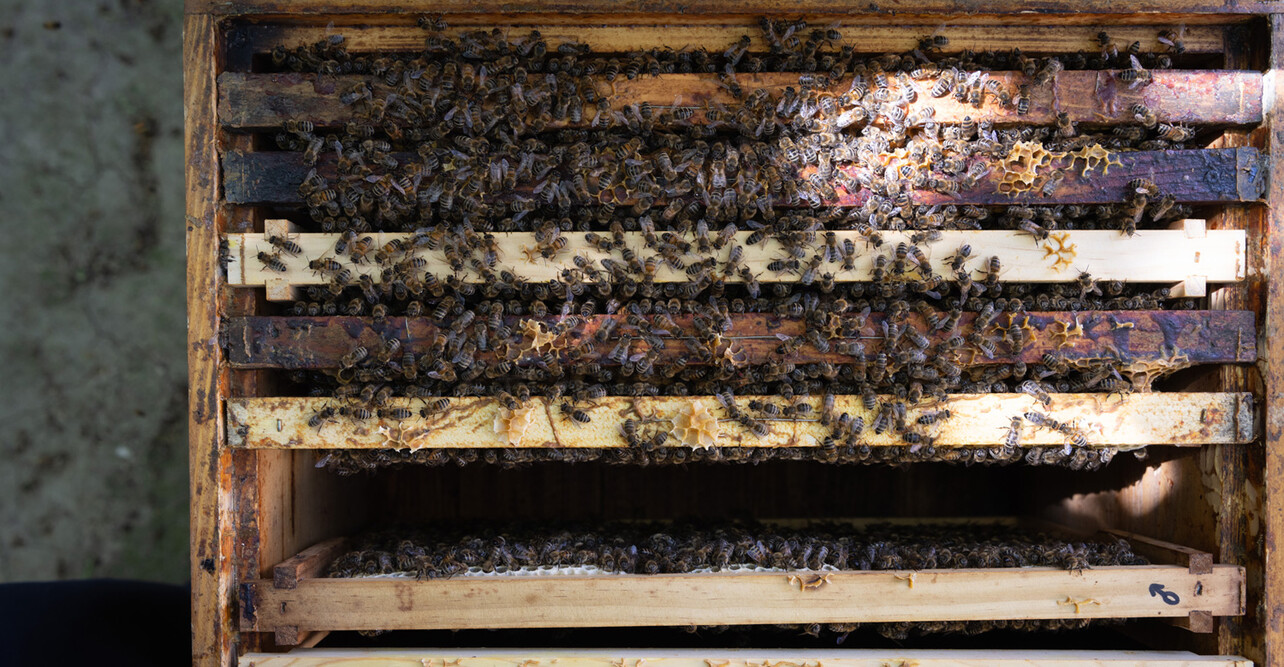Honey bees in the MuseumsQuartier
Since spring 2023, the MQ has been home to four beehives with 250,000 honey bees. Bees are an irreplaceable part of our ecosystems: Their pollination service is essential for biodiversity and its preservation.
In the immediate vicinity of the beehive, there are bee-friendly plants such as the climbing blue rain, acacias and chestnuts. The bees also fly to the Federal Gardens to collect nectar from the richly planted flowers, such as in the castle garden with over 400 different varieties of roses.
How is honey made?
Bees collect nectar and honeydew. From these, honey is made by drying, fermenting and adding additives. It contains up to 270 ingredients: sugars, vitamins, amino acids, hormones, fragrances and minerals such as iron, magnesium and zinc. Important: Honey should never be heated above 40°C!
Effects & Properties
Honey has antibacterial, anti-inflammatory and soothing effects thanks to so-called inhibins. A study by the University of Oxford confirms this: Honey often works better than medication for coughs.
Propolis - the resin of the bees
Propolis is made up of resins, waxes, essential oils and pollen. Bees use it to protect the hive from germs. Propolis is antibacterial, antiviral and anti-inflammatory - Aristotle used it to heal wounds. It helps with flu and herpes, for example.
Fascinating facts about bees
- It takes the nectar from five million flowers to produce one kilogramme of honey.
- Honey: 80% sugar, 17% water - the reverse for nectar
- One bee weighs 0.1g and can carry its weight in nectar
- The hive contains 1 queen bee, 65.000 workers, 8.000 drones
- The queen bee lays up to 2.000 eggs per day
- Bees communicate by dancing - e.g. the waggle dance
- Pollination is the most important service provided by bees, more important than honey production.
